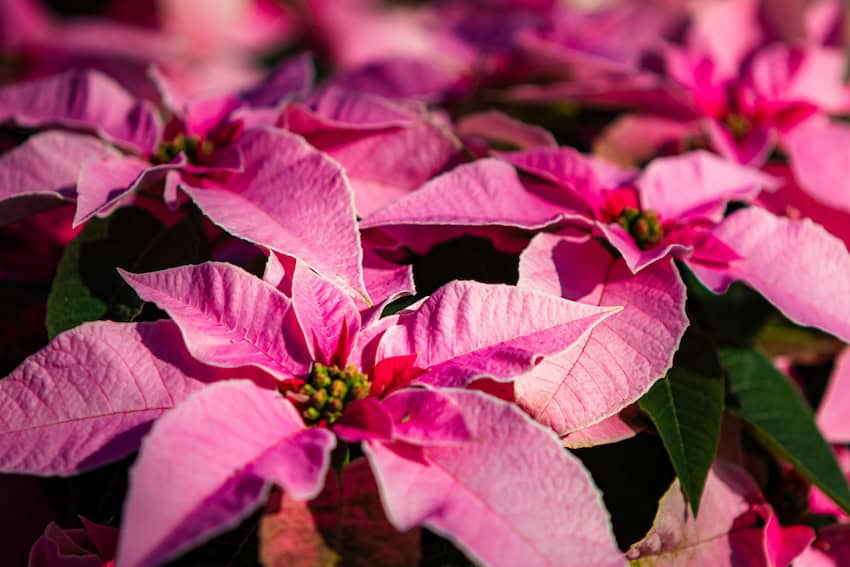As part of an annual tradition, 39 kilometers of poinsettias were planted across Mexico City on Nov. 22, marking the start of the festive season.
Mexico City’s Public Works and Services Ministry enlisted the help of 400 workers to plant 147,000 nochebuenas — the common name for the flower in Mexico — along 12 primary roads throughout the capital, covering a total of 38.66 km.
¡La Ciudad de México se viste de rojo! 🌺🎄
Iniciamos la plantación de nochebuenas en Av. Paseo de la Reforma, con motivo de las fiestas decembrinas
🎅🏼🎉 #ObrasSonAmores#CapitalDeLaTransformacion pic.twitter.com/nJKD5pNZQA— Secretaría de Obras y Servicios CDMX (@SOBSECDMX) November 23, 2024
Around the globe, poinsettias (Euphorbia pulcherrima) have become synonymous with the Christmas season. The bright red flowering plant is native to Mexico and 30 varieties are grown in six states, including Morelos, Michoacán, Mexico City and Puebla.
Before the arrival of the Spanish in 1519, the ornamental plant was grown in the gardens of the Mexica royalty, such as Moctezuma II and Nezahualcóyotl.
Then came Robert Poinsett, the plants’ English-language namesake.
When Poinsett, the first U.S. minister to Mexico, visited during Christmas in 1825, he sent some samples to the Bartram Botanical Garden in Philadelphia. The poinsettias were exhibited there in 1829 to great success, before being introduced to Europe.

Where to find poinsettias in Mexico City
You can see the striking red plants along the following streets:
- Paseo de la Reforma: from Periférico to Eje 2 Norte
- Canal de Miramontes: from Calz. del Hueso to Canal Nacional
- Viaducto Río Becerra: from Puente La Morena to Viaducto Miguel Alemán
- Renato Leduc: from Calz. Tlalpan to Calle Coapa
- Periférico Sur: from Camino a Santa Teresa to Calle Forestales
- Eje 6 Sur: from Avenida Javier Rojo Gómez to Gabriela Mistral
- Avenida Chapultepec: from Circuito Interior to Avenida Niños Héroes
- Avenida 8: from Circuito Interior to Viaducto Río de la Piedad
- Eje 3 Oriente: from Calle 310 to Calle 306
- Ejército Nacional: from Bahía de la Concepción to Calle Kepler
- Calzada de la Viga: from Calle Campesinos to Avenida Recreo
- Calzada México-Tenochtitlán: from Calle Valerio Trujano to Calle Héroes
As part of the annual Festival de Nochebuena, poinsettia growers offer flowers for sale in public plazas across the capital. They mainly come in red, white and pink and can be bought for 40 to 300 pesos (US $2- $15), depending on the size of the plant.
They will be available for purchase in the following places:
- The main squares of the Coyoacán, Gustavo A. Madero, Iztapalapa, Tláhuac, Iztacalco and Milpa Alta neighborhoods, from Nov. 15 to Dec. 1
- Chapultepec Park (at the Puerta de los Leones entrance), from Nov. 19 to Dec. 1
- República de Guatemala, from Nov. 19 to Dec. 1
- Tourism Ministry, from Nov. 19 to Dec. 19
- Francisco I. Madero Avenue, from Nov. 25 to Dec. 1
- Pabellón Cuemanco, from Nov. 29 to Dec. 1
- Mexico City Zócalo, from Nov. 25 to Dec. 1
- Paseo de la Reforma, from Dec. 2 to 15
You can find all of the festival’s points of sale on this map.
The flower farmers of Xochimilco have produced roughly 1.8 million poinsettias for sale in Mexico City this year. If sales go well, they could generate 70 million pesos for over 5,000 families, including families of growers and day laborers hired for cultivation and marketing, according to the Mexico City government.
With reports from El Universal and CDMX Secreta
